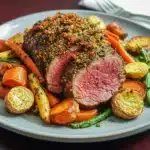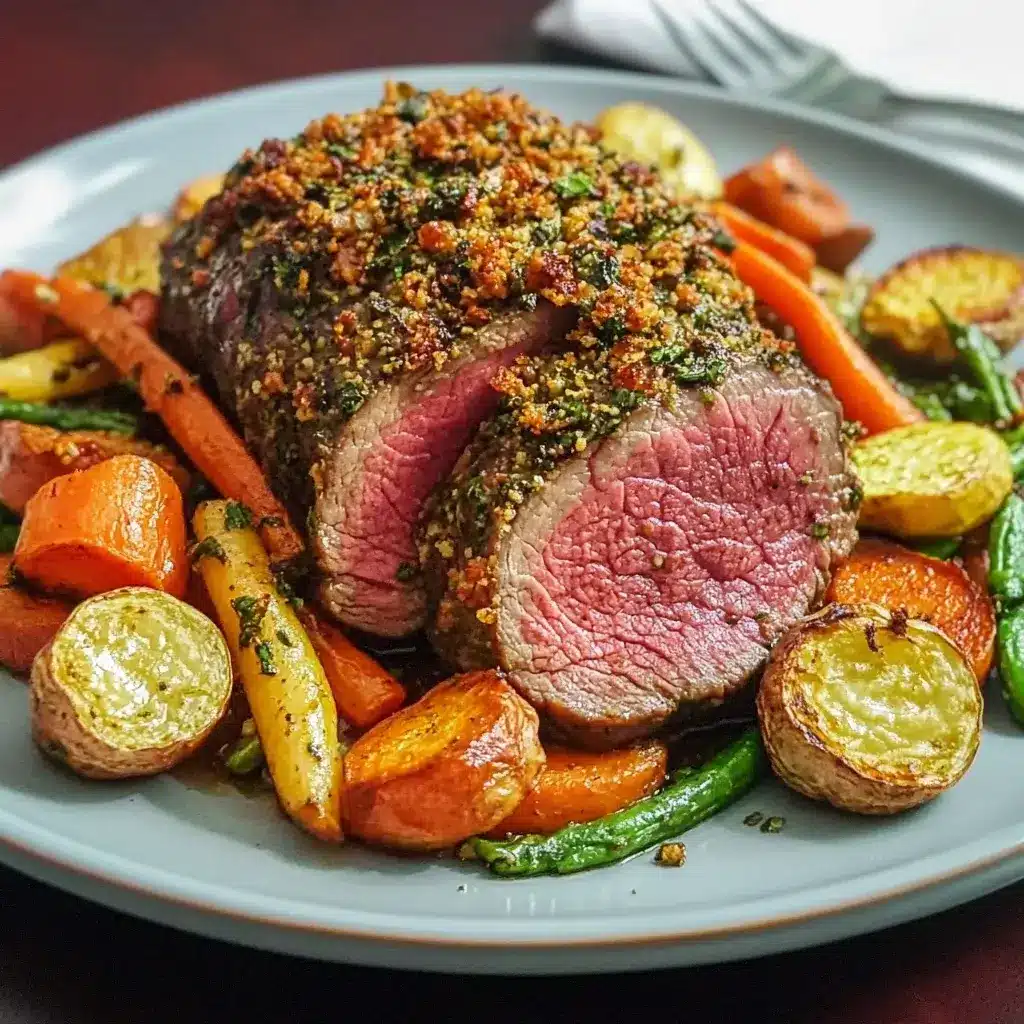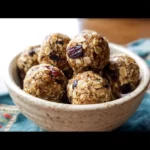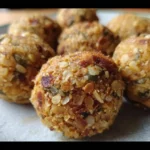It’s funny how some meals just become instant classics in your household. This Herb Crusted Beef with Spring Veggies recipe was one of those happy accidents. I was looking to create something vibrant and flavorful, something that celebrated the arrival of spring produce while still offering the satisfying heartiness of a good beef dish. Let me tell you, the aroma that filled my kitchen as this roasted was simply divine! My family, usually picky eaters, devoured every last bite, and even my youngest, who usually shies away from vegetables, asked for seconds of the asparagus and carrots. The herb crust on the beef was crispy and fragrant, perfectly complementing the tender, juicy meat underneath. And the spring vegetables, roasted to sweet perfection, provided a delightful contrast in texture and flavor. This recipe has quickly become a regular feature on our dinner table, and I’m so excited to share it with you. Prepare to be amazed by the simplicity and deliciousness of this Herb Crusted Beef with Spring Veggies – it’s a guaranteed crowd-pleaser!
Ingredients
- 2 lbs Beef Roast (Sirloin, Ribeye, or Tenderloin): Choose a good quality cut of beef, about 2 inches thick, for optimal tenderness and flavor.
- 1 bunch Asparagus (about 1 lb), trimmed: Select firm, bright green asparagus spears. Trim the woody ends for best texture.
- 1 lb Baby Carrots, peeled: Use pre-peeled baby carrots for convenience, or peel and chop regular carrots into similar sizes.
- 1 lb New Potatoes, halved or quartered if large: Small, thin-skinned potatoes are perfect. Halve or quarter them to ensure even cooking.
- 1 cup Fresh Spring Peas, shelled: Sweet and tender spring peas add a burst of freshness. Frozen peas, thawed, can be substituted if fresh are unavailable.
- 1/4 cup Olive Oil: Extra virgin olive oil is recommended for its flavor and health benefits.
- 1/4 cup Fresh Parsley, chopped: Flat-leaf parsley provides a bright, herbaceous note.
- 1/4 cup Fresh Rosemary, chopped: Rosemary adds a piney, aromatic depth to the herb crust.
- 1/4 cup Fresh Thyme, chopped: Thyme brings an earthy, slightly lemony flavor to the herb mixture.
- 4 cloves Garlic, minced: Fresh garlic is essential for the aromatic base of the herb crust.
- 1 Lemon, zest and juice: Lemon zest adds brightness and citrus aroma, while the juice tenderizes the beef and enhances the flavors.
- 1 tbsp Dijon Mustard: Dijon mustard helps the herb crust adhere to the beef and adds a tangy depth.
- 1 tsp Salt: Sea salt or kosher salt enhances the flavors of all ingredients.
- 1/2 tsp Black Pepper: Freshly ground black pepper adds a subtle spice.
Instructions
- Preheat Oven and Prepare Beef: Preheat your oven to 400°F (200°C). Pat the beef roast dry with paper towels. This helps achieve a good sear and allows the herb crust to adhere better.
- Prepare Herb Crust: In a medium bowl, combine the chopped parsley, rosemary, thyme, minced garlic, lemon zest, Dijon mustard, olive oil, salt, and pepper. Mix well until all ingredients are evenly incorporated and form a fragrant herb paste.
- Crust the Beef: Place the beef roast on a cutting board. Using your hands or a spatula, generously spread the herb crust mixture all over the top and sides of the beef roast. Ensure the entire surface is covered for maximum flavor and crust formation.
- Prepare Vegetables: In a large bowl, toss the asparagus, baby carrots, and new potatoes with 2 tablespoons of olive oil, salt, and pepper. Ensure the vegetables are evenly coated with oil and seasoning.
- Roast Beef and Vegetables: Arrange the vegetables in a single layer on a large baking sheet or roasting pan. Place the herb-crusted beef roast in the center of the pan, nestled among the vegetables. This allows the vegetable juices and beef drippings to mingle, enhancing the overall flavor of the dish.
- Roasting Time – Beef: Roast for approximately 20-25 minutes for medium-rare beef, 25-30 minutes for medium, or 30-35 minutes for medium-well, depending on the thickness of your roast and your desired level of doneness. Use a meat thermometer inserted into the thickest part of the beef to check for internal temperature.
- For medium-rare: 130-135°F (54-57°C)
- For medium: 135-140°F (57-60°C)
- For medium-well: 140-145°F (60-63°C)
- For well-done: 145°F+ (63°C+)
- Roasting Time – Vegetables: The vegetables will typically be tender and slightly caramelized around the same time the beef is done. Check for doneness by piercing a potato with a fork; it should be easily pierced. Asparagus should be tender-crisp and carrots slightly softened.
- Add Spring Peas: During the last 5 minutes of roasting, sprinkle the fresh spring peas over the vegetables in the pan. This will gently steam them and keep them bright green and tender.
- Rest the Beef: Once the beef reaches your desired internal temperature, remove the baking sheet from the oven. Transfer the beef roast to a cutting board and tent loosely with foil. Let the beef rest for at least 10-15 minutes before carving. Resting allows the juices to redistribute throughout the meat, resulting in a more tender and flavorful roast.
- Carve and Serve: While the beef is resting, squeeze the juice of half a lemon over the roasted vegetables in the pan and toss gently to brighten their flavor. Carve the beef roast against the grain into slices. Serve the herb-crusted beef slices alongside the roasted spring vegetables. Garnish with fresh parsley or a sprinkle of extra lemon zest, if desired. Enjoy your Herb Crusted Beef with Spring Veggies!
Nutrition Facts
(Approximate values per serving, based on 6 servings. Nutritional values can vary based on specific ingredients and portion sizes.)
- Serving Size: 1 Serving: One serving is estimated to be approximately one slice of beef (about 4 oz cooked weight) and a generous portion of roasted vegetables (about 1 cup).
- Calories: Approximately 550-650 calories per serving: This is an estimated range and depends on the cut of beef used and the amount of olive oil. This dish is relatively calorie-dense due to the beef and oil, but provides significant protein and nutrients.
- Protein: Approximately 40-50 grams per serving: Beef is an excellent source of high-quality protein, essential for muscle building and repair, as well as overall body function.
- Vitamin C: High in Vitamin C: Spring vegetables like asparagus and peas are good sources of Vitamin C, an antioxidant that supports the immune system and skin health.
Preparation Time
- Prep Time: 25 minutes: This includes the time to chop vegetables, prepare the herb crust, and crust the beef. Efficient chopping and organization can help reduce prep time.
- Cook Time: 25-35 minutes: The roasting time depends on the desired doneness of the beef and the size of the roast. Vegetable roasting time is largely parallel to beef cooking time.
- Rest Time: 10-15 minutes: Resting the beef is crucial for tenderness and juiciness. Factor this time into your overall meal planning.
- Total Time: Approximately 60-75 minutes: From start to finish, including prep, cooking, and resting, this dish can be ready in just over an hour, making it a manageable option for a weeknight dinner or a weekend feast.
How to Serve
- Family Style: Place the carved herb-crusted beef roast on a large platter surrounded by the roasted spring vegetables. This encourages sharing and creates a visually appealing presentation.
- Individual Plates: Serve each plate with slices of beef and a generous portion of roasted vegetables. This allows for controlled portions and a more formal presentation.
- With a Side Salad: A light and refreshing green salad with a vinaigrette dressing complements the richness of the beef and roasted vegetables, adding freshness and balance to the meal.
- With Grain Sides: Serve alongside quinoa, couscous, or roasted farro for a more substantial and complete meal. These grains pair well with the herb flavors and roasted vegetables.
- With a Dipping Sauce: Offer a side of creamy horseradish sauce or a vibrant chimichurri sauce for dipping the beef, adding an extra layer of flavor and tanginess.
- Leftover Beef Sandwiches: Slice leftover beef thinly and use it for delicious sandwiches the next day. Top with the roasted vegetables and a smear of Dijon mustard or mayonnaise.
Additional Tips
- Use a Meat Thermometer: Investing in a meat thermometer is the best way to ensure your beef is cooked to your desired level of doneness. Don’t rely solely on cooking time, as ovens and beef roasts can vary.
- Don’t Overcrowd the Pan: Ensure the vegetables are arranged in a single layer on the baking sheet. Overcrowding can lead to steaming rather than roasting, resulting in soggy vegetables. Use two baking sheets if necessary.
- Adjust Vegetable Roasting Time: If you prefer your vegetables softer, you can start roasting them for 10-15 minutes before adding the beef to the pan. This gives them a head start and ensures they are tender by the time the beef is cooked.
- Customize the Herb Crust: Feel free to experiment with different herbs in the crust. Consider adding fresh oregano, marjoram, or even a pinch of red pepper flakes for a little heat.
- Substitute Vegetables: If spring peas are not available, you can substitute with green beans, sugar snap peas, or even broccoli florets. Adjust roasting times as needed based on the vegetable density.
- Marinate the Beef (Optional): For even more tender and flavorful beef, you can marinate it for 2-4 hours before applying the herb crust. A simple marinade of olive oil, lemon juice, garlic, and herbs would work well.
- Make it Ahead: You can prepare the herb crust mixture and chop the vegetables a day ahead. Store them separately in the refrigerator. This can significantly reduce prep time on the day of cooking.
- Deglaze the Pan for a Sauce: After removing the beef and vegetables from the pan, you can deglaze the pan with red wine or beef broth. Scrape up the flavorful browned bits from the bottom of the pan and simmer until slightly reduced. This creates a delicious pan sauce to drizzle over the beef and vegetables.
FAQ Section
Q1: Can I use frozen vegetables for this recipe?
A: Yes, you can use frozen vegetables, but fresh is highly recommended for the best flavor and texture, especially for spring vegetables. If using frozen, thaw them completely and pat them dry before roasting to prevent them from becoming soggy. Frozen peas are a good substitute if fresh spring peas are unavailable, add them during the last few minutes of roasting as instructed.
Q2: What if I don’t have all the fresh herbs? Can I use dried herbs?
A: Fresh herbs are ideal for the herb crust, but you can substitute with dried herbs in a pinch. As a general rule, use about 1 teaspoon of dried herbs for every tablespoon of fresh herbs. For this recipe, you could use about 1 tablespoon each of dried parsley, rosemary, and thyme. However, the flavor will be more intense and slightly different from fresh herbs.
Q3: Can I cook this beef roast on the grill instead of in the oven?
A: Yes, grilling is a fantastic option for this recipe! Preheat your grill to medium-high heat. Place the herb-crusted beef roast on the grill and cook for approximately the same time as oven roasting, using a meat thermometer to ensure it reaches the desired internal temperature. You can grill the vegetables alongside the beef in a grill basket or on a separate part of the grill. Grilling will impart a smoky flavor to both the beef and vegetables.
Q4: What’s the best way to store leftovers?
A: Store leftover herb-crusted beef and roasted vegetables in separate airtight containers in the refrigerator. They will keep well for 3-4 days. Reheat the beef and vegetables separately in the oven or microwave until warmed through. Slicing the beef thinly before reheating can help prevent it from drying out.
Q5: Can I use a different cut of beef for this recipe?
A: Yes, you can use other cuts of beef such as ribeye, tenderloin, or even a top round roast. Adjust the roasting time accordingly based on the cut and thickness of the beef, and always use a meat thermometer to ensure it’s cooked to your preferred doneness. Leaner cuts like top round might benefit from a shorter cooking time to prevent them from becoming dry.
Q6: Is this recipe gluten-free and dairy-free?
A: Yes, this recipe is naturally gluten-free and dairy-free, as long as you ensure your Dijon mustard is gluten-free (most are, but always check the label). All the ingredients are naturally free of gluten and dairy, making it suitable for those with dietary restrictions.
Q7: Can I add other vegetables to this recipe?
A: Absolutely! Feel free to add other spring or root vegetables you enjoy. Consider adding bell peppers, zucchini, red onion wedges, or parsnips. Adjust roasting time as needed for denser vegetables like root vegetables, ensuring they are tender-crisp when done.
Q8: How can I make this recipe spicier?
A: To add a kick of spice, you can incorporate a pinch of red pepper flakes into the herb crust mixture. Alternatively, you can add a finely chopped jalapeño or serrano pepper to the vegetables before roasting. Serving with a spicy chimichurri sauce or a drizzle of hot sauce at the end are also great ways to increase the heat level.
Print
Herb Crusted Beef with Spring Veggies
Ingredients
- 2 lbs Beef Roast (Sirloin, Ribeye, or Tenderloin): Choose a good quality cut of beef, about 2 inches thick, for optimal tenderness and flavor.
- 1 bunch Asparagus (about 1 lb), trimmed: Select firm, bright green asparagus spears. Trim the woody ends for best texture.
- 1 lb Baby Carrots, peeled: Use pre-peeled baby carrots for convenience, or peel and chop regular carrots into similar sizes.
- 1 lb New Potatoes, halved or quartered if large: Small, thin-skinned potatoes are perfect. Halve or quarter them to ensure even cooking.
- 1 cup Fresh Spring Peas, shelled: Sweet and tender spring peas add a burst of freshness. Frozen peas, thawed, can be substituted if fresh are unavailable.
- 1/4 cup Olive Oil: Extra virgin olive oil is recommended for its flavor and health benefits.
- 1/4 cup Fresh Parsley, chopped: Flat-leaf parsley provides a bright, herbaceous note.
- 1/4 cup Fresh Rosemary, chopped: Rosemary adds a piney, aromatic depth to the herb crust.
- 1/4 cup Fresh Thyme, chopped: Thyme brings an earthy, slightly lemony flavor to the herb mixture.
- 4 cloves Garlic, minced: Fresh garlic is essential for the aromatic base of the herb crust.
- 1 Lemon, zest and juice: Lemon zest adds brightness and citrus aroma, while the juice tenderizes the beef and enhances the flavors.
- 1 tbsp Dijon Mustard: Dijon mustard helps the herb crust adhere to the beef and adds a tangy depth.
- 1 tsp Salt: Sea salt or kosher salt enhances the flavors of all ingredients.
- 1/2 tsp Black Pepper: Freshly ground black pepper adds a subtle spice.
Instructions
- Preheat Oven and Prepare Beef: Preheat your oven to 400°F (200°C). Pat the beef roast dry with paper towels. This helps achieve a good sear and allows the herb crust to adhere better.
- Prepare Herb Crust: In a medium bowl, combine the chopped parsley, rosemary, thyme, minced garlic, lemon zest, Dijon mustard, olive oil, salt, and pepper. Mix well until all ingredients are evenly incorporated and form a fragrant herb paste.
- Crust the Beef: Place the beef roast on a cutting board. Using your hands or a spatula, generously spread the herb crust mixture all over the top and sides of the beef roast. Ensure the entire surface is covered for maximum flavor and crust formation.
- Prepare Vegetables: In a large bowl, toss the asparagus, baby carrots, and new potatoes with 2 tablespoons of olive oil, salt, and pepper. Ensure the vegetables are evenly coated with oil and seasoning.
- Roast Beef and Vegetables: Arrange the vegetables in a single layer on a large baking sheet or roasting pan. Place the herb-crusted beef roast in the center of the pan, nestled among the vegetables. This allows the vegetable juices and beef drippings to mingle, enhancing the overall flavor of the dish.
- Roasting Time – Beef: Roast for approximately 20-25 minutes for medium-rare beef, 25-30 minutes for medium, or 30-35 minutes for medium-well, depending on the thickness of your roast and your desired level of doneness. Use a meat thermometer inserted into the thickest part of the beef to check for internal temperature.
- For medium-rare: 130-135°F (54-57°C)
- For medium: 135-140°F (57-60°C)
- For medium-well: 140-145°F (60-63°C)
- For well-done: 145°F+ (63°C+)
- Roasting Time – Vegetables: The vegetables will typically be tender and slightly caramelized around the same time the beef is done. Check for doneness by piercing a potato with a fork; it should be easily pierced. Asparagus should be tender-crisp and carrots slightly softened.
- Add Spring Peas: During the last 5 minutes of roasting, sprinkle the fresh spring peas over the vegetables in the pan. This will gently steam them and keep them bright green and tender.
- Rest the Beef: Once the beef reaches your desired internal temperature, remove the baking sheet from the oven. Transfer the beef roast to a cutting board and tent loosely with foil. Let the beef rest for at least 10-15 minutes before carving. Resting allows the juices to redistribute throughout the meat, resulting in a more tender and flavorful roast.
- Carve and Serve: While the beef is resting, squeeze the juice of half a lemon over the roasted vegetables in the pan and toss gently to brighten their flavor. Carve the beef roast against the grain into slices. Serve the herb-crusted beef slices alongside the roasted spring vegetables. Garnish with fresh parsley or a sprinkle of extra lemon zest, if desired. Enjoy your Herb Crusted Beef with Spring Veggies!
Nutrition
- Serving Size: one normal portion
- Calories: 650
- Protein: 50 grams






